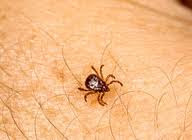Encephalitis
Definition:
Encephalitis (en-sef-uh-LI-tis) is inflammation of the brain. Viral infections are the most common cause of the condition.
Encephalitis can cause flu-like symptoms, such as a fever or severe headache, as well as confused thinking, seizures, or problems with senses or movement. Many cases of encephalitis may go unnoticed because they result in only mild flu-like symptoms or even no symptoms. Severe cases of encephalitis, while relatively rare, can be life-threatening.
Because the course of any single case of encephalitis is relatively unpredictable, it's important to get a timely diagnosis and treatment.
Symptoms:
Most people with viral encephalitis have either no symptoms or mild flu-like symptoms, such as the following:
Get immediate care if you or someone you know is experiencing any of the symptoms associated with more-severe cases of encephalitis. Severe headache, fever and altered consciousness — almost always present with encephalitis in older children and adults — require urgent care.
Infants and young children with any signs or symptoms of encephalitis should receive urgent care.
Causes:
The cause of encephalitis is often unknown, but the most commonly diagnosed cause is a viral infection. Known causes of encephalitis may include:
Common causes of encephalitis include:
Complications:
The complications resulting from encephalitis depend on several factors, including age, the cause of the infection, the severity of the initial illness and the time from disease onset to treatment.
In most cases, people with relatively mild illness recover within a few weeks with no long-term complications.
Complications of severe illness
Injury to the brain from inflammation can result in a number of problems. The most severe cases can result in:
Treatments and drugs:
Treatment for mild cases mainly consists of:
More-serious cases of encephalitis usually require aggressive antiviral treatments. Antiviral drugs commonly used to treat encephalitis include:
Side effects of the antiviral drugs may include nausea, vomiting, diarrhea, loss of appetite, and muscle or joint soreness or pain. Rare serious problems may include abnormalities in kidney or liver function or suppression of bone marrow activity. Appropriate tests are used to monitor for serious adverse effects.
Supportive care
Additional supportive care also is needed in the hospital for people with severe encephalitis. The care may include:
After the initial illness, it may be necessary to receive additional therapy depending on the type and severity of complications. This therapy may include:
Definition:
Encephalitis (en-sef-uh-LI-tis) is inflammation of the brain. Viral infections are the most common cause of the condition.
Encephalitis can cause flu-like symptoms, such as a fever or severe headache, as well as confused thinking, seizures, or problems with senses or movement. Many cases of encephalitis may go unnoticed because they result in only mild flu-like symptoms or even no symptoms. Severe cases of encephalitis, while relatively rare, can be life-threatening.
Because the course of any single case of encephalitis is relatively unpredictable, it's important to get a timely diagnosis and treatment.
Symptoms:
Most people with viral encephalitis have either no symptoms or mild flu-like symptoms, such as the following:
- Headache
- Fever
- Aches in muscles or joints
- Fatigue or weakness
- Severe headache
- Fever
- Altered consciousness
- Confusion or agitation
- Personality changes
- Seizures
- Loss of sensation or paralysis in certain areas of the body
- Muscle weakness
- Hallucinations
- Double vision
- Perception of foul smells
- Problems with speech or hearing
- Loss of consciousness
- Bulging in the soft spots (fontanels) of the skull in infants
- Nausea and vomiting
- Body stiffness
- Constant, inconsolable crying
- Crying that worsens when the child is picked up
- Poor feeding
Get immediate care if you or someone you know is experiencing any of the symptoms associated with more-severe cases of encephalitis. Severe headache, fever and altered consciousness — almost always present with encephalitis in older children and adults — require urgent care.
Infants and young children with any signs or symptoms of encephalitis should receive urgent care.
Causes:
The cause of encephalitis is often unknown, but the most commonly diagnosed cause is a viral infection. Known causes of encephalitis may include:
- Viruses
- Bacteria
- Fungi
- Parasites
- Primary encephalitis occurs when a virus or other
infectious agent directly infects the brain. The infection may be
concentrated in one area or widespread. A primary infection may be a
reactivation of a virus that had been inactive (latent) after a previous
illness.
- Secondary (post-infectious) encephalitis is a faulty immune system reaction in response to an infection elsewhere in the body. This likely occurs when disease-fighting proteins enlisted to fight an infection mistakenly attack molecules in the brain. Secondary encephalitis often occurs two to three weeks after the initial infection. Rarely, secondary encephalitis occurs as a complication of vaccination against a viral infection.
Common causes of encephalitis include:
- Herpes simplex virus. There are two types of herpes
simplex virus (HSV). HSV type 1 (HSV-1) more commonly causes cold sores
or fever blisters around your mouth, and HSV type 2 (HSV-2) more
commonly causes genital herpes. While HSV-1 encephalitis is rare, it has
the potential to cause significant brain damage or death.
- Other herpes viruses. Other herpes viruses that may
cause encephalitis include the Epstein-Barr virus, which commonly
causes infectious mononucleosis, and the varicella-zoster virus, which
commonly causes chickenpox and shingles.
- Enteroviruses. These viruses include the poliovirus
and the coxsackievirus, which usually causes an illness with flu-like
symptoms, eye inflammation and abdominal pain.
- Mosquito-borne viruses. Arboviruses, or
arthropod-borne viruses, are transmitted by mosquitoes or other
blood-sucking insects. Mosquito-borne viruses can cause infections that
include West Nile, La Crosse, St. Louis, western equine and eastern
equine encephalitis. Mosquitoes transfer the virus from a nonhuman host —
such as a bird, chipmunk or horse — to humans. Symptoms of an infection
may appear within a few days to a couple of weeks after exposure to an
arbovirus.
- Tick-borne viruses. In the United States, the only
known tick-transmitted virus that causes encephalitis is Powassan virus.
Symptoms usually appear about a week after exposure to the virus.
- Rabies virus. Infection with the rabies virus,
which is usually transmitted by a bite from an infected animal, causes a
rapid progression to encephalitis once symptoms begin. The disease
causes death if the infection isn't treated before it reaches the spinal
cord and brain.
- Childhood infections. Common childhood infections — such as measles (rubeola), mumps, and German measles (rubella) — used to be fairly common causes of secondary encephalitis. These causes are now rare because of the availability of vaccinations for these diseases
Complications:
The complications resulting from encephalitis depend on several factors, including age, the cause of the infection, the severity of the initial illness and the time from disease onset to treatment.
In most cases, people with relatively mild illness recover within a few weeks with no long-term complications.
Complications of severe illness
Injury to the brain from inflammation can result in a number of problems. The most severe cases can result in:
- Respiratory arrest
- Coma
- Death
- Fatigue
- Weakness
- Mood disorders
- Personality changes
- Memory problems
- Intellectual disabilities
- Lack of muscle coordination
- Paralysis
- Hearing or vision defects
- Speech impairments
Treatments and drugs:
Treatment for mild cases mainly consists of:
- Bed rest
- Plenty of fluids
- Anti-inflammatory drugs — such as acetaminophen (Tylenol, others), ibuprofen (Advil, Motrin, others) and naproxen (Aleve, others) — to relieve headaches and fever.
More-serious cases of encephalitis usually require aggressive antiviral treatments. Antiviral drugs commonly used to treat encephalitis include:
- Acyclovir (Zovirax)
- Ganciclovir (Cytovene)
Side effects of the antiviral drugs may include nausea, vomiting, diarrhea, loss of appetite, and muscle or joint soreness or pain. Rare serious problems may include abnormalities in kidney or liver function or suppression of bone marrow activity. Appropriate tests are used to monitor for serious adverse effects.
Supportive care
Additional supportive care also is needed in the hospital for people with severe encephalitis. The care may include:
- Breathing assistance, as well as careful monitoring of breathing and heart function
- Intravenous fluids to ensure proper hydration and appropriate levels of essential minerals
- Anti-inflammatory drugs, such as corticosteroids, to help reduce swelling and pressure within the skull
- Anticonvulsant medications, such as phenytoin (Dilantin), to stop or prevent seizures.
After the initial illness, it may be necessary to receive additional therapy depending on the type and severity of complications. This therapy may include:
- Physical therapy to improve strength, flexibility, balance, motor coordination and mobility
- Occupational therapy to develop everyday skills and to use adaptive products that help with everyday activities
- Speech therapy to relearn muscle control and coordination to produce speech
- Psychotherapy to learn coping strategies and new behavioral skills to improve mood disorders or address personality changes — with medication management if necessary.














.jpg)
.jpg)







.jpg)